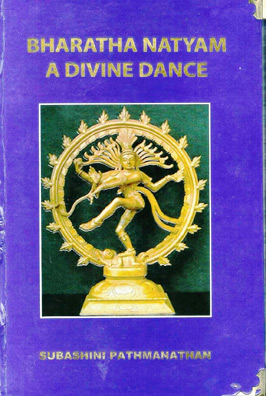A manual of Bharatha Natyam for art lovers
Bharatha Natyam A Divine Dance
Author: Subashini Pathmanathan
Publisher: India-Sri Lanka Foundation
Reviewed by Brindha Sheshan
Bharatha Natyam A Divine Dance, a book on Bharatha Natyam, was
written by Sri Lankan born Bharatha Natya exponent Subashini
Pathmanathan. This is her 12th book and third English book. The printing
of the book was sponsored by the India-Sri Lanka Foundation.
Subashini has written hundreds of articles in Tamil and English,
since 1983. She is one of the reputed artistes and writers on dance,
culture, tradition and related topics. The book deals with numerous
aspects of Bharatha Natyam. Each chapter is unique, independent and
individual. The independent view of the author is reflected in each
chapter of the book. The book deals with Bharatha Natyam and numerous
aspects of society including social, spiritual, cultural and linguistic
factors. Each chapter has been written with meticulous care from a
research and analytical point of view.
The book reveals by and large the authorís personal and independent
analytical views.
Lord Siva
The book contains some of the interesting aspects of Bharata Natyam.
 The opening chapter deals with the significance of Ananda Thandavam
of Lord Siva and it gives a meaningful explanation to the reader. The
reason for adopting the Ananda Thandavam has been discussed. The opening chapter deals with the significance of Ananda Thandavam
of Lord Siva and it gives a meaningful explanation to the reader. The
reason for adopting the Ananda Thandavam has been discussed.
The approach of Bharatha Natyam in the modern society is another
important aspect discussed in the book. It reveals the mentality of the
present society in handling the divine art. This is the first book which
is released on dance of this nature, with so many important and valuable
practical analytical aspects of dance.
The outstanding fact of the book is, that the author compares
Bharatha Natyam with Sri Lankan dances. In Sri Lanka Bharatha Natyam is
one of the most popular dance forms. But so far no book has been written
on Bharatha Natyam in relation to Sri Lankan resources. The book bridges
the gap which has not been filled by anybody so far. It brings out the
writerís own personal experience, knowledge and observation in relation
to the dance.
Guardstone
Especially the chapters such as archaeological guardstone sculptures
of Sri Lanka in relation to Bharatha Natyam, Lankan Hindu Temple
Sculptures in general, the role of Sri Lankan sculptures and Bharatha
Natyam and their uniqueness are some of the important chapters.
A special place is given to the indigenous Sri Lankan Tamil Koothu
forms.
The author deals with the indigenous Tamil dance forms of the North,
East and North West provinces of Sri Lanka.
One chapter is totally dedicated to promote and build the communal
harmony among the two major communities of Sri Lanka.
She explains how Bharatha Natya repertoire is based on sacred Hindu
temple structure. The sixth chapter reveals how Bharatha Natyam was
preserved by the Tamil community as a part of their culture.
One chapter describes the impact of sculptures on dance. It
beautifully describes Bharatha Natyam influence on ancient temple
sculptures. Another chapter is allocated for the development of
institution of the Devadasi system in dance.
Information
The book provides valuable information about the historical and the
development of Bharatha Natyam in Sri Lanka. The author analyses the
importance of the femalesí contribution for the development of Bharatha
Natyam.
The chapter on the role of revivalists in Bharatha Natyam highlights
a wealth of information on the development of Bharatha Natyam in the
20th century, from the temple dance Sadir.
One chapter of the book deals with the role of Hinduism in the Indian
dances.
Another chapter deals with the contribution of temple halls for the
development of Bharatha Natyam. These chapters provide valuable
information about how Hinduism and temple environs played a vital role
for the development of Bharatha Natyam.
Two more chapters of the book are dedicated to Guru Bakthi in
classical dance and Guru Shishya tradition in classical Bharatha Natyam.
These two chapters impart the moral value of the guru to the present
generation of the student community.
Hand gestures
Some of the chapters deal with the practical aspects of dance such as
the role of hand gestures in Bharatha Natyam, role of Abhinaya in Indian
classical dance, role of personality in dance, role of garlands in
Bharatha Natyam, impact of technology on Bharatha Natyam, fusion dances
and the role of make -up and hairdressing in Indian classical dances.
These chapters impart and emphasise how numerous practical factors
influence the classical dance.
The last two chapters are quite different from the earlier chapters,
because they are allocated for the dance illustration and explanation
with beautiful diagrams of the eye neck, and body positions.
The last chapter elaborately provides the 108 Karanas of Lord siva.
On the whole the book provides valuable information on various
aspects of dance to art lovers, teachers and students. |

